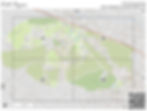StreetLight Mapping; A Quick Approach to Addressing Blackout on Campus
- Victor Ademoyero || Regional Ambassador || Federal University of Technology, Akure
- May 5, 2024
- 5 min read
Updated: Jan 14
Recognizing the importance of proactive problem-solving, the Federal University of Technology, Akure, renowned for its technological prowess, has witnessed ongoing efforts to illuminate the campus at night through street light installations.
Despite these improvements, YouthMappersFUTA observed persistent blackout issues in certain areas from 7:30 PM to 5:30 AM. Olasunkanmi Oladejo, the Publicity Relations Officer, identified this challenge and a perfect solution was proposed.
Leveraging GIS technology, the chapter mapped and addressed the extent of the blackout, emphasizing the need for comprehensive coverage beyond commonly frequented areas, where many students study late into the night due to limited electricity access outside the campus.
Objectives:
To create a detailed GIS dataset of streetlight locations within the university campus.
To assess and categorize the streetlights based on their working condition and powered source.
To identify clusters of damaged or non-functional streetlights for targeted maintenance efforts.
To Identify the location of Old Street light removal for proper organization of street lights along roads
To map out dark regions on campus (majorly the roads)
To provide university authorities with a decision map highlighting areas that require immediate attention for repairs and upgrades.

Methodology
The initial phase involved creating a survey form designed to capture each question systematically, with the aim of facilitating the accomplishment of the project's objectives.
S/N | Survey Question | Objective Addressed |
1 | What is the Campus name | The Area |
2. | Where is the streetlight located? | To create a detailed GIS dataset of streetlight locations within the university campus. |
3. | Please choose the appropriate option to indicate whether the streetlight is old or new. Options:
| To Identify the location of Old Street light removal for proper organization of street lights along roads |
4. | Streetlight powered source: Options:
| To assess and categorize the streetlights based on powered sources. |
5. | Please select the appropriate option that best describes the condition of the streetlight Options:
| To assess and categorize the streetlights based on their working condition |
6. | Record the streetlight coordinate N.B - Record coordinates with less than 5 meters accuracy: | To create a detailed GIS dataset of streetlight locations within the university campus. |
7. | Enter your name (Mapper Name) |
A comprehensive training session was conducted within the chapter to delve into the full objectives of the Streetlight map project. During this gathering, the project's goals were disseminated among all chapter members, highlighting the significance of the initiative for both the school authorities and the students on campus. The training included a detailed presentation of various types of streetlights on campus, offering insights into the optimal methods for identifying their condition, power source, and categorization based on criteria such as new or old.

To enhance field mapping efficiency, I had the opportunity to present the project's methodology, demonstrating the process of creating a field map through Field Paper at http://fieldpapers.org/. I also guided the team in planning field movements within the specified task boundary of the field paper. This approach aims to streamline field mapping efforts by systematically organizing teams during the fieldwork period, minimizing the risk of data collection overlap across the campus.

A training on how to download and use the KoboCollect application to fill up the survey form respectively was conducted. Immediately after the training, all chapter members with their respective phones went to the field to test out the survey form by mapping out some streetlights, and respective corrections were made to ensure proper responses to the survey based on what they could see.
I led the Validator Team and Spatial Analysis team to ensure accurate datasets were collected and the geoprocessing tools were used to analyze the datasets properly for accurate visualization.

The team of Validators reviewed the data collected using Qgis. During cleaning, it was observed that some mappers recorded some point location with low accuracy greater than 30 meters. To ensure proper cleaning and corrections. The location of where these wrongly mapped street lights was located with QGIS and some group of validators went to the field to map the area again to update the result accordingly.

QGIS Implementation: Utilizing QGIS, YouthMappers FUTA created a detailed map showcasing the locations and conditions of the identified street lights. This map served as a visual representation of the campus lighting infrastructure. On QGIS, Geoprocessing tools like clip, buffer, intersection tool and also the filter tool.
Clip Tool
The Clip tool served the purpose of extracting campus roads within the campus boundaries from a larger road dataset downloaded via the QuickOSM plugin. The need for this tool arose when some roads extended beyond the defined campus limits, and the Clip tool helped refine the dataset to include only relevant information related to campus roads.
Filter tool
The Filter tool played a role in refining point datasets based on streetlight categories, including condition, type (old or new), and power source. This tool was instrumental in organizing and categorizing streetlight data, allowing for a more detailed and nuanced analysis of the streetlight infrastructure within the campus.
Buffer Tool
The Buffer tool played a crucial role in creating polygons around specific point locations at a specified distance. In this context, it was employed to identify the extent of active and bright streetlights. After measuring different streetlight brightness extents, the analysis revealed that most streetlights illuminated an area of 17 meters. This information was essential for understanding the coverage and distribution of streetlights in the designated area.
Intersection Tool
The Intersection tool was utilized to identify roads perfectly lit within the 17-meter buffer extent. The focus of this analysis was on areas frequented by students, especially during late hours. By intersecting roads with the buffer extent, the tool provided valuable insights into well-lit pathways within the campus, contributing to safety considerations.
Results




Finally, YouthMappers FUTA Chapter had the privilege to showcase these results to the current Vice Chancellor of Federal University of Technology, Akure during the University's convocation week.

I strongly believe this project is a call to other chapters to pick up such a methodology to map out the street light condition in their respective campuses and also help in addressing Blackout on campus easily.
Special Thanks to the validator team and analysis team - Oladejo Olasunkanmi,Oluwafemi Adeyemo, Ogungbemi Ezekiel Tobiloba and all YouthMappersFUTA members for volunteering their time to push this great mapping initiative.
About the Author
Victor Ademoyero - YouthMappers Regional Ambassador for Global Technical SupportFront-Engineer and Geospatial Analyst












